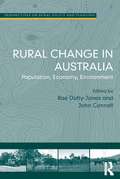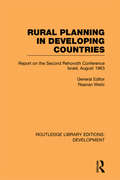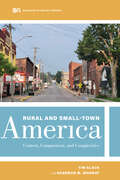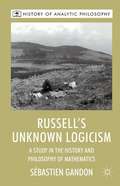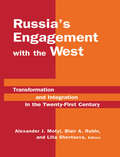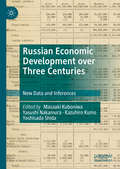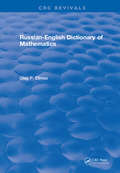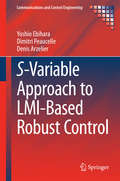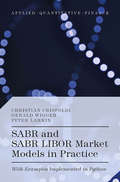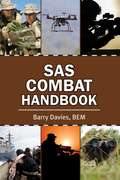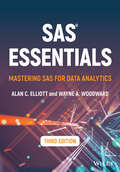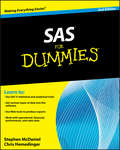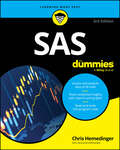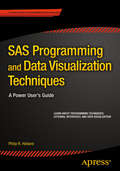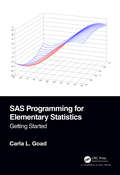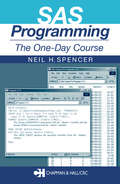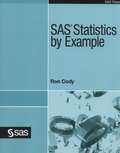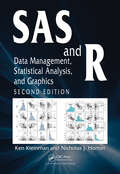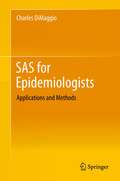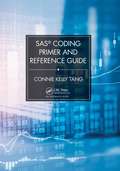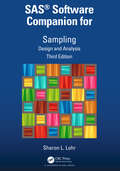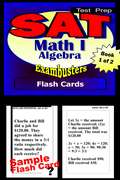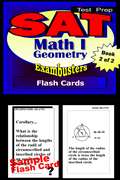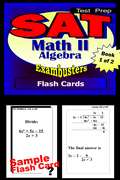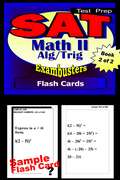- Table View
- List View
Rural Change in Australia: Population, Economy, Environment (Perspectives On Rural Policy And Planning Ser.)
by John ConnellNew twenty-first century economic, social and environmental changes have challenged and reshaped rural Australia. They range from ageing populations, youth out-migration, immigration policies (that seek to place skilled migrants in rural Australia), tree changers, agricultural restructuring and new relationships with indigenous populations. Challenges also exist around the 'patchwork economy' and the wealth that the mining boom offers some areas, while threatening regional economic decline in others. Rural Australia is increasingly not simply a place of production of agriculture and minerals but an idea that individuals seek and are encouraged to consume. The socio-economic implications of drought, water rights and changing farming practices, have prefaced new social, cultural and economic reforms. This book provides a contemporary perspective on rapidly evolving population, economic and environmental changes in 'rural and regional Australia', itself a significant concept. Bringing together a range of empirical studies, the book builds on established rural studies themes such as population change, economic restructuring and globalisation in agriculture but links such changes to environmental change, culture, class, gender, and ethnic diversity. Presenting original and in-depth interventions on these issues and their intersections, this book assembles the best of contemporary research on rural Australia.
Rural Planning in Developing Countries: Report on the Second Rehovoth Conference Israel, August 1963
by Raanan WeitzFirst published in 1965, this reissue is a report on the Second Rehovoth Conference of August 1963, convened by the then Deputy Prime Minister of Israel, Mr Abba Eban, in order to enable the scientists and political leaders of developing countries to establish meaningful communication on the overall topic of comprehensive planning of agriculture in developing countries. Conference discussions centred on the three main topics of; agricultural planning and rural development; the human factor in agricultural development; and agricultural research, extension, and education.
Rural and Small-Town America: Context, Composition, and Complexities (Sociology in the Twenty-First Century #9)
by Tim Slack Shannon M MonnatContemporary America is centered around urban society. Most Americans reside in cities or their surrounding suburbs, and both the media and modern American sociology focus disproportionately on urban life. Rural and Small-Town America looks at what we can learn from rural society and confronts common myths and misunderstandings about rural people and places. Tim Slack and Shannon M. Monnat examine social, economic, and demographic changes and how these changes pose both problems and opportunities for rural communities. They assess changes in population size and composition, economies and livelihoods, ethnoracial diversity and inequities, population health and health disparities, and politics and policies. The central focus of this book is that rural America is no paragon of stability. Social change abounds, accompanied by new challenges. Through analysis of empirical evidence, demographic data, and policy debates, readers will glean insights about rural America and the United States as a whole.
Russell’s Unknown Logicism: A Study in the History and Philosophy of Mathematics (History of Analytic Philosophy)
by Sébastien GandonIn this excellent book Sebastien Gandon focuses mainly on Russell's two major texts, Principa Mathematica and Principle of Mathematics, meticulously unpicking the details of these texts and bringing a new interpretation of both the mathematical and the philosophical content. Winner of The Bertrand Russell Society Book Award 2013.
Russia's Engagement with the West: Transformation and Integration in the Twenty-First Century
by Lilia Shevtsova Alexander J. Motyl Blair A. RubleThe Putin and Bush presidencies, the 9/11 attack, and the war in Iraq have changed the dynamics of Russian-European-US relations and strained the Western alliance. Featuring contributions by leading experts in the field, this work is the first systematic effort to reassess the status of Russia's modernization efforts in this context. Part I examines political, economic, legal, and cultural developments in Russia for evidence of convergence with Western norms. In Part II, the contributors systematically analyze Russia's relations with the European Union, Eastern Europe, Central Asia, and the United States in light of new security concerns and changing economic and power relationships.
Russian Economic Development over Three Centuries: New Data and Inferences
by Kazuhiro Kumo Yasushi Nakamura Masaaki Kuboniwa Yoshisada ShidaThis book aims to provide a comprehensive statistical picture of the Russian economic development covering the Imperial, Soviet, and New Russian periods. The authors have reconstructed Russian socio-economic statistics from both published and archival materials. The book gives concise descriptions as well as new insights on the Russian economic development. Compiled such that estimations by the authors are kept to a minimum and extensive explanations and notes on the sources, the definitions, the statistical methodologies, the problems and inconsistencies of the original data, and the pitfalls of interpreting the time series are given makes this a standard reference book of the Russian economic history. It will be of value to economists, scholars of collectivist economics, and scholars of Russia and the Soviet experience.
Russian-English Dictionary of Mathematics
by Oleg EfimovAn essential book for anyone using Russian mathematical and scientific literature Russian-English Dictionary of Mathematics embraces all major branches of mathematics from elementary topics to advanced studies in topology and discrete mathematics. Terms from the newest branches of mathematics, such as the theories of games, trees, knots, and braids, are included as well.Containing more than 27,000 entries, Russian-English Dictionary of Mathematics is larger and provides a broader scope than any other bilingual mathematics dictionary now in use. Many adjectives and verbs are included, and a copious amount of synonyms are provided for various terms. Secondary terms are grouped under principal terms for easier reference.Russian-English Dictionary of Mathematics provides the most comprehensive vocabulary aid available for translators, readers, and writers of Russian mathematical and scientific literature.
S-Variable Approach to LMI-Based Robust Control
by Yoshio Ebihara Dimitri Peaucelle Denis ArzelierThis book shows how the use of S-variables (SVs) in enhancing the range of problems that can be addressed with the already-versatile linear matrix inequality (LMI) approach to control can, in many cases, be put on a more unified, methodical footing. Beginning with the fundamentals of the SV approach, the text shows how the basic idea can be used for each problem (and when it should not be employed at all). The specific adaptations of the method necessitated by each problem are also detailed. The problems dealt with in the book have the common traits that: analytic closed-form solutions are not available; and LMIs can be applied to produce numerical solutions with a certain amount of conservatism. Typical examples are robustness analysis of linear systems affected by parametric uncertainties and the synthesis of a linear controller satisfying multiple, often conflicting, design specifications. For problems in which LMI methods produce conservative results, the SV approach is shown to achieve greater accuracy. The authors emphasize the simplicity and easy comprehensibility of the SV approach and show how it can be implemented in programs without difficulty so that its power becomes readily apparent. The S-variable Approach to LMI-based Robust Control is a useful reference for academic control researchers, applied mathematicians and graduate students interested in LMI methods and convex optimization and will also be of considerable assistance to practising control engineers faced with problems of conservatism in their systems and controllers.
SABR and SABR LIBOR Market Models in Practice: With Examples Implemented in Python (Applied Quantitative Finance)
by Peter Larkin Christian Crispoldi Gérald WiggerInterest rate traders have been using the SABR model to price vanilla products for more than a decade. However this model suffers however from a severe limitation: its inability to value exotic products. A term structure model à la LIBOR Market Model (LMM) is often employed to value these more complex derivatives, however the LMM is unable to capture the volatility smile. A joint SABR LIBOR Market Model is the natural evolution towards a consistent pricing of vanilla and exotic products. Knowledge of these models is essential to all aspiring interest rate quants, traders and risk managers, as well an understanding of their failings and alternatives. SABR and SABR Libor Market Models in Practice is an accessible guide to modern interest rate modelling. Rather than covering an array of models which are seldom used in practice, it focuses on the SABR model, the market standard for vanilla products, the LIBOR Market Model, the most commonly used model for exotic products and the extended SABR LIBOR Market Model. The book takes a hands-on approach, demonstrating simply how to implement and work with these models in a market setting. It bridges the gap between the understanding of the models from a conceptual and mathematical perspective and the actual implementation by supplementing the interest rate theory with modelling specific, practical code examples written in Python.
SAS Combat Handbook
by Barry DaviesAn SAS soldier explains the battle history of this prestigious military service, while teaching how you can defend yourself in both hand-to-hand and military combat. Seventy years after its inception, the Special Air Service (SAS) is recognized by many as one of the most decorated military forces in the world. Their soldiers do battle on a daily basis, taking actions that are normally swift, very hard hitting, and extremely secretive. They will go--willingly--deep behind enemy lines, taking on incredible odds and risking their lives in the hope of rescuing others. In the SAS Combat Handbook, you will be informed on all aspects of SAS operations. With never-before-seen photographs of these heroes in action and untold stories of individual acts of bravery, you will be taught the key combat methods that have made this military group exactly what they are: elite. Included are training tips that will teach you about various military tactics, such as: The art of cover and remaining hidden behind enemy lines The keys to covert insertion and extraction operations Counterterrorism skills, including building entry, ambush, and sniping Fire battles on land, in the air, or at sea And so much more From the gathering of intelligence to undercover operations, the SAS is made up of two hundred men who are rigorously selected, highly trained, and ready to face what others fear. They know what it takes to get the job done, and no matter the situation, their combat skills are the best in the business.
SAS Essentials: Mastering SAS for Data Analytics
by Alan C. Elliott Wayne A. WoodwardSAS ESSENTIALS Valuable step-by-step introduction to using SAS® statistical software as a foundational approach to data analysis and interpretation Presenting a straightforward introduction from the ground up, SAS® Essentials illustrates SAS using hands-on learning techniques and numerous real-world examples; keeping different experience levels in mind, the highly qualified author team has developed the book over 25 years of teaching introductory SAS courses. This book introduces data manipulation, statistical techniques, and the SAS programming language, including SAS macros, reporting results in tables, and factor analysis, as well as sections on character functions, variable manipulation, and merging, appending, and updating files. It features self-contained chapters to enhance the learning process and includes programming approaches for the latest version of the SAS platform. The Third Edition has been updated with expanded examples, a new chapter introducing PROC SQL as well as new end-of-chapter exercises. The Third Edition also includes a companion website with data sets, additional code, notes on SAS programming, functions, ODS, PROC SQL, and SAS Arrays, along with solutions for instructors. Specific sample topics covered in SAS® Essentials include: Getting data into SAS, reading, writing, and importing data, preparing data for analysis, preparing to use SAS procedures, and controlling output using ODS Techniques for creating, editing, and debugging SAS programs, cleaning up messy data sets, and manipulating data using character, time, and numeric functions Other essential computational skills that are utilized by business, government, and organizations alike, and DATA step for data management Using PROC to analyze data, including evaluating quantitative data, analyzing counts and tables, comparing means using T-Tests, correlation and regression, and analysis of variance, nonparametric analysis, logistic regression, factor analysis, and creating custom graphs and reports. SAS® Essentials is a fundamental study resource for professionals preparing for the SAS Base Certification Exam, as well as an ideal textbook for courses in statistics, data analytics, applied SAS programming, and statistical computer applications.
SAS For Dummies
by Chris Hemedinger Stephen McdanielThe fun and easy way to learn to use this leading business intelligence toolWritten by an author team who is directly involved with SAS, this easy-to-follow guide is fully updated for the latest release of SAS and covers just what you need to put this popular software to work in your business. SAS allows any business or enterprise to improve data delivery, analysis, reporting, movement across a company, data mining, forecasting, statistical analysis, and more. SAS For Dummies, 2nd Edition gives you the necessary background on what SAS can do for you and explains how to use the Enterprise Guide.SAS provides statistical and data analysis tools to help you deal with all kinds of data: operational, financial, performance, and morePlaces special emphasis on Enterprise Guide and other analytical tools, covering all commonly used featuresCovers all commonly used features and shows you the practical applications you can put to work in your businessExplores how to get various types of data into the software and how to work with databasesCovers producing reports and Web reporting tools, analytics, macros, and working with your dataIn the easy-to-follow, no-nonsense For Dummies format, SAS For Dummies gives you the knowledge and the confidence to get SAS working for your organization.Note: CD-ROM/DVD and other supplementary materials are not included as part of eBook file.
SAS For Dummies
by Chris HemedingerBecome data-savvy with the widely used data and AI software Data and analytics are essential for any business, giving insight into what's working, what can be improved, and what else needs to be done. SAS software helps you make sure you're doing data right, with a host of data management, reporting, and analysis tools. SAS For Dummies teaches you the essentials, helping you navigate this statistical software and turn information into value. In this book, learn how to gather data, create reports, and analyze results. You'll also discover how SAS machine learning and AI can help deliver decisions based on data. Even if you're brand new to data and analytics, this easy-to-follow guide will turn you into an SAS power user. Become familiar with the most popular SAS applications, including SAS 9 and SAS Viya Connect to data, organize your information, and adopt sound data security practices Get a primer on working with data sets, variables, and statistical analysis Explore and analyze data through SAS programming and rich application interfaces Create and share graphs interactive visualizations to deliver insights This is the perfect Dummies guide for new SAS users looking to improve their skills—in any industry and for any organization size.
SAS Programming and Data Visualization Techniques
by Philip R. HollandSAS Programming and Data Visualization Techniques: A Power User's Guide brings together a wealth of ideas about strategic and tactical solutions to everyday situations experienced when transferring, extracting, processing, analyzing, and reporting the valuable data you have at your fingertips. Best, you can achieve most of the solutions using the SAS components you already license, meaning that this book's insights can keep you from throwing money at problems needlessly. Author Philip R. Holland advises a broad range of clients throughout Europe and the United States as an independent consultant and founder of Holland Numerics Ltd, a SAS technical consultancy. In this book he explains techniques--through code samples and example--that will enable you to increase your knowledge of all aspects of SAS programming, improve your coding productivity, and interface SAS with other programs. He also provides an expert's overview of Graph Templates, which was recently moved into Base SAS. You will learn to create attractive, standardized, reusable, and platform-independent graphs--both statistical and non-statistical--to help you and your business users explore, visualize, and capitalize on your company's data. In addition, you will find many examples and cases pertaining to healthcare, finance, retail, and other industries. Among other things, SAS Programming and Data Visualization Techniques will show you how to: Write efficient and reusable SAS code Combine look-up data sets with larger data sets effectively Run R and Perl from SAS Run SAS programs from SAS Studio and Enterprise Guide Output data into insightful, valuable charts and graphs SAS Programming and Data Visualization Techniques prepares you to make better use of your existing SAS components by learning to use the newest features, improve your coding efficiency, help you develop applications that are easier to maintain, and make data analysis easier. In other words, it will save you time, money, and effort--and make you a more valuable member of the development team. What you'll learn How to write more efficient SAS code--either code that runs quicker, code that is easier to maintain, or both How to do more with the SAS components you already license How to take advantage of the newest features in SAS How to interface external applications with SAS software How to create graphs using SAS ODS Graphics Who this book is for SAS programmers wanting to improve their existing programming skills, and programming managers wanting to make better use of the SAS software they already license. Table of Contents The Basics of Efficient SAS Coding How to Use Look-up Tables Effectively Case: SAS Skills in Epidemiology SAS to R to SAS Knit Perl and SAS for DIY Web Applications Running SAS Programs in Enterprise Guide Running SAS Programs in SAS Studio or Enterprise Guide Everyday Uses for SAS Output Delivery System (ODS) Introduction to Graph Templates and ODS Graphics Procedures Generating Graph Templates Converting SAS/GRAPH Plots to ODS Graphics Converting SAS/GRAPH Annotate to ODS Graphics Customizing Graph Templates ODS GRAPHICS Statement
SAS Programming for Elementary Statistics: Getting Started
by Carla L. GoadSAS for Elementary Statistics: Getting Started provides an introduction to SAS programming for those who have experience with introductory statistical methods. It is also an excellent programming supplement for an introductory statistics course. It is appropriate for the beginning programmer with no prior SAS experience and the researcher who would like to refresh SAS programming skills. These lessons are those the author has found successful in the classroom. Strengths of this book include the following: Examples are easy to follow and understand. Chapters have user-friendly text and objectives. Each chapter has clear objectives with SAS syntax and output results given. Objectives are stated as tasks with detailed step-by-step instructions. Programming notes based on the author's experience occur throughout the book. The author assists the reader in making sense of the error messages in the SAS log. Brief reviews of statistical methods are included in chapters accompanying the corresponding SAS procedures. Easy transition from user terminology to SAS terminology is provided. The ability to select or suppress results using Output Delivery System (ODS) is made simple. Reading and writing to external files are among the most used SAS skills, and these concepts are clearly presented. The IMPORT and EXPORT procedures and ODS are used to accomplish these tasks. Statistical Graphics procedures and SAS/GRAPH can be quite challenging to learn, but these are presented in a very achievable format. Basic graph construction is first introduced then readers learn how to add color, pattern, and other enhancements to graphics images.
SAS Programming: The One-Day Course
by Neil H. SpencerAimed at researchers and students , SAS Programming: The One-Day Course provides an introduction to the SAS programming language. It gives the reader a start in SAS programming and the basic data manipulations and statistical summaries that are available through SAS. The book has its origins in material prepared by the author for a one-day course i
SAS Statistics by Example
by Ron CodyIn SAS Statistics by Example, Ron Cody offers up a cookbook approach for doing statistics with SAS. Structured specifically around the most commonly used statistical tasks or techniques--for example, comparing two means, ANOVA, and regression--this book provides an easy-to-follow, how-to approach to statistical analysis not found in other books. For each statistical task, Cody includes heavily annotated examples using ODS Statistical Graphics procedures such as SGPLOT, SGSCATTER, and SGPANEL that show how SAS can produce the required statistics. Also, you will learn how to test the assumptions for all relevant statistical tests. Major topics featured include descriptive statistics, one- and two-sample tests, ANOVA, correlation, linear and multiple regression, analysis of categorical data, logistic regression, nonparametric techniques, and power and sample size. This is not a book that teaches statistics. Rather, SAS Statistics by Example is perfect for intermediate to advanced statistical programmers who know their statistics and want to use SAS to do their analyses. This book is part of the SAS Press program.
SAS and R: Data Management, Statistical Analysis, and Graphics, Second Edition
by Nicholas J. Horton Ken KleinmanAn Up-to-Date, All-in-One Resource for Using SAS and R to Perform Frequent TasksThe first edition of this popular guide provided a path between SAS and R using an easy-to-understand, dictionary-like approach. Retaining the same accessible format, SAS and R: Data Management, Statistical Analysis, and Graphics, Second Edition explains how to easily p
SAS for Epidemiologists
by Charles DimaggioThis comprehensive text covers the use of SAS for epidemiology and public health research. Developed with students in mind and from their feedback, the text addresses this material in a straightforward manner with a multitude of examples. It is directly applicable to students and researchers in the fields of public health, biostatistics and epidemiology. Through a "hands on" approach to the use of SAS for a broad number of epidemiologic analyses, readers learn techniques for data entry and cleaning, categorical analysis, ANOVA, and linear regression and much more. Exercises utilizing real-world data sets are featured throughout the book. SAS screen shots demonstrate the steps for successful programming. SAS (Statistical Analysis System) is an integrated system of software products provided by the SAS institute, which is headquartered in California. It provides programmers and statisticians the ability to engage in many sophisticated statistical analyses and data retrieval and mining exercises. SAS is widely used in the fields of epidemiology and public health research, predominately due to its ability to reliably analyze very large administrative data sets, as well as more commonly encountered clinical trial and observational research data.
SAS® Coding Primer and Reference Guide
by Connie TangAlthough the web and online SAS® communities can provide volumes of information for programmers, these resources are often overwhelming and lack a simple path to guide coding SAS. This reference, however, does provide such a path from a data user’s standpoint vs. seeing things as a code writer. Written by an experienced SAS programmer, this book lets SAS coders easily find explanations and clarification to typical programming problems. This book presents practical real-world data analysis steps encountered by analysts in the field. These steps include the following: Getting to know raw data Understanding variables Getting data into SAS Creating new data variables Performing data manipulations, including sorting, ranking, grouping, subtotal, total, and percentage Statistical testing under a broad range of logical and conditional settings Data visualization Throughout this book, statements and codes are accompanied by thorough annotation. Line-by-line explanations ensure that all terms are clearly explained. Code examples and sample codes have broad usages. All the examples are related to highway transportation where the use of big data is exploding and presenting new challenges and opportunities for growth. Clear and precise practical introductory material on statistics is integrated into the relevant SAS procedures to bolster users’ confidence in applying such methods to their own work. Comprehensive and foundational coverage, systematic introduction of programming topics, thoroughly annotated code examples, and real-world code samples combine to make SAS® Coding Primer and Reference Guide an indispensable reference for beginners and experienced programmers.
SAS® Software Companion for Sampling: Design and Analysis, Third Edition
by Sharon L. LohrThe SAS® Software Companion for Sampling: Design and Analysis, designed to be read alongside Sampling: Design and Analysis, Third Edition by Sharon L. Lohr (SDA; 2022, CRC Press), shows how to use the survey selection and analysis procedures of SAS® software to perform calculations for the examples in SDA. No prior experience with SAS software is needed. Chapter 1 tells you how to access the software, introduces basic features, and helps you get started with analyzing data. Each subsequent chapter provides step-by-step guidance for working through the data examples in the corresponding chapter of SDA, with code, output, and interpretation. Tips and warnings help you develop good programming practices and avoid common survey data analysis errors. Features of the SAS software procedures are introduced as they are needed so you can see how each type of sample is selected and analyzed. Each chapter builds on the knowledge developed earlier for simpler designs; after finishing the book, you will know how to use SAS software to select and analyze almost any type of probability sample. All code is available on the book website and is easily adapted for your own survey data analyses. The website also contains all data sets from the examples and exercises in SDA to help you develop your skills through analyzing survey data from social and public opinion research, public health, crime, education, business, agriculture, and ecology
SAT Math Level I Test Prep Review--Exambusters Algebra Flash Cards--Workbook 1 of 2: Math Level I - Algebra (Exambusters SAT II Workbook #1 of 2)
by Sat Ii Exambusters450 questions and answers. Essential definitions, formulas, concepts, and sample problems.<P><P> Topics: Sets, Variables, Exponents, Properties of Numbers, Like Terms, Simple Equations, Property of Equality, Signed Numbers, Monomials, Polynomials, Advanced Equations, Verbal Problems, Factoring Polynomials, Algebraic Fractions, Equations with Several Variables, Advanced Verbal Problems, Evaluating Formulas, Simultaneous Equations, Ratio and Proportion, Variation, Quadratic Equations and Radicals, Coordinate Geometry <P>Exambusters SAT Prep Workbooks provide comprehensive, fundamental SAT review--one fact at a time--to prepare students to take practice SAT tests. Each SAT study guide focuses on one specific subject area covered on the SAT exams. From 300 to 600 questions and answers, each volume in the SAT series is a quick and easy, focused read. Reviewing SAT flash cards is the first step toward more confident SAT preparation and ultimately, higher SAT exam scores!
SAT Math Level I Test Prep Review--Exambusters Geometry Flash Cards--Workbook 2 of 2: Math Level I - Geometry (Exambusters SAT II Workbook #2 of 2)
by Sat Ii Exambusters450 questions and answers. Essential definitions, formulas, and concepts with complementary diagrams. <P><P>Topics: Lines and Angles, Triangles, Introduction to Proofs, Congruent Triangles, Perpendicular Lines, Parallel Lines, Angle Sums, Quadrilaterals, Medians, Altitudes, Bisectors, Circles, Ratio and Proportion, Similar Polygons, Proportions in Right Triangles, Areas of Polygons, Circles and Regular Polygons, Inequalities, Locus, Introduction to Coordinate Geometry <P>Exambusters SAT Prep Workbooks provide comprehensive, fundamental SAT review--one fact at a time--to prepare students to take practice SAT tests. Each SAT study guide focuses on one specific subject area covered on the SAT exams. From 300 to 600 questions and answers, each volume in the SAT series is a quick and easy, focused read. Reviewing SAT flash cards is the first step toward more confident SAT preparation and ultimately, higher SAT exam scores!
SAT Math Level II Test Prep Review--Exambusters Algebra 1 Flash Cards--Workbook 1 of 2: Math Level II - Algebra (Exambusters SAT II Workbook #1 of 2)
by Sat Ii Exambusters450 questions and answers. Essential definitions, formulas, concepts, and sample problems.<P><P> Topics: Sets, Variables, Exponents, Properties of Numbers, Like Terms, Simple Equations, Property of Equality, Signed Numbers, Monomials, Polynomials, Advanced Equations, Verbal Problems, Factoring Polynomials, Algebraic Fractions, Equations with Several Variables, Advanced Verbal Problems, Evaluating Formulas, Simultaneous Equations, Ratio and Proportion, Variation, Quadratic Equations and Radicals, Coordinate Geometry <P>Exambusters SAT Prep Workbooks provide comprehensive, fundamental SAT review--one fact at a time--to prepare students to take practice SAT tests. Each SAT study guide focuses on one specific subject area covered on the SAT exams. From 300 to 600 questions and answers, each volume in the SAT series is a quick and easy, focused read. Reviewing SAT flash cards is the first step toward more confident SAT preparation and ultimately, higher SAT exam scores!
SAT Math Level II Test Prep Review--Exambusters Algebra 2-Trig Flash Cards--Workbook 2 of 2: Math Level II - Algebra/Trigonometry (Exambusters SAT II Workbook #2 of 2)
by Sat Ii Exambusters500 questions and answers that focus on essential advanced algebra and trigonometry concepts. Includes complementary diagrams. Essential definitions, formulas, and sample problems. <P><P>Topics: Exponents and Radicals, Absolute Values and Inequalities, Polynomials, Linear Equations, Quadratic Equations, Conic Sections, Logarithms, Angles, Trigonometric Functions and Identities, Oblique Triangles, Complex and Imaginary Numbers, Area and Volume, Sequences and Series <P>Exambusters SAT Prep Workbooks provide comprehensive, fundamental SAT review--one fact at a time--to prepare students to take practice SAT tests. Each SAT study guide focuses on one specific subject area covered on the SAT exams. From 300 to 600 questions and answers, each volume in the SAT series is a quick and easy, focused read. Reviewing SAT flash cards is the first step toward more confident SAT preparation and ultimately, higher SAT exam scores!
